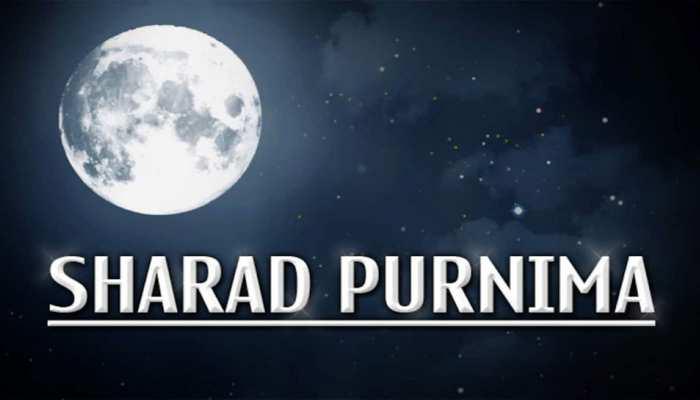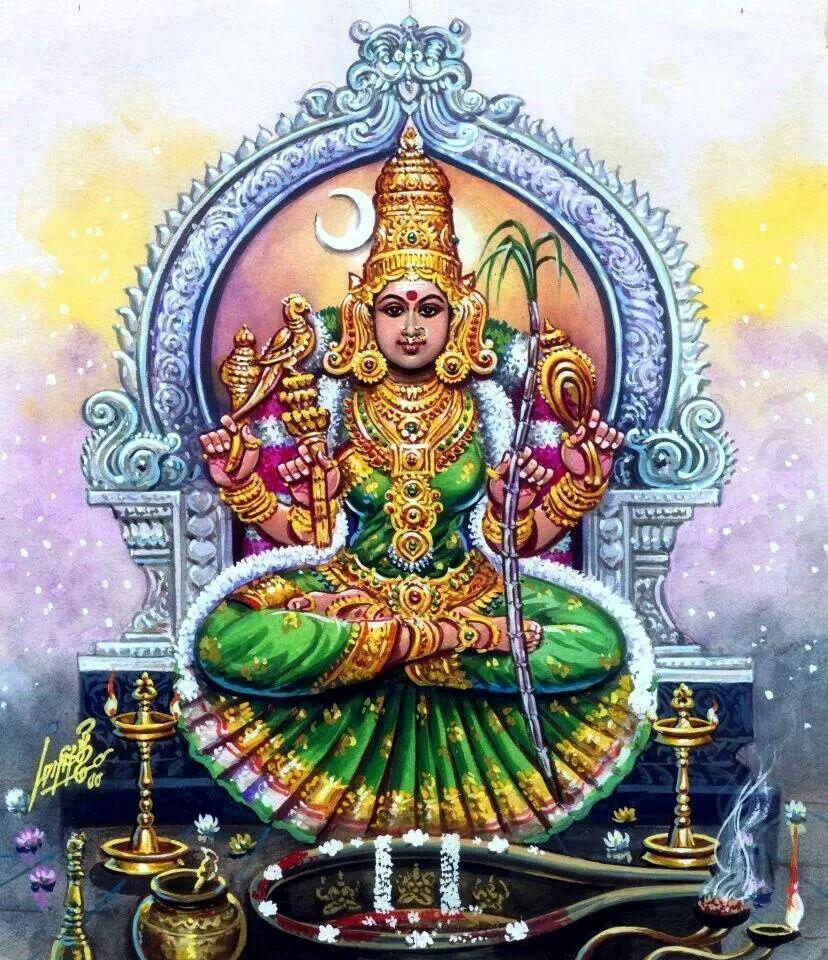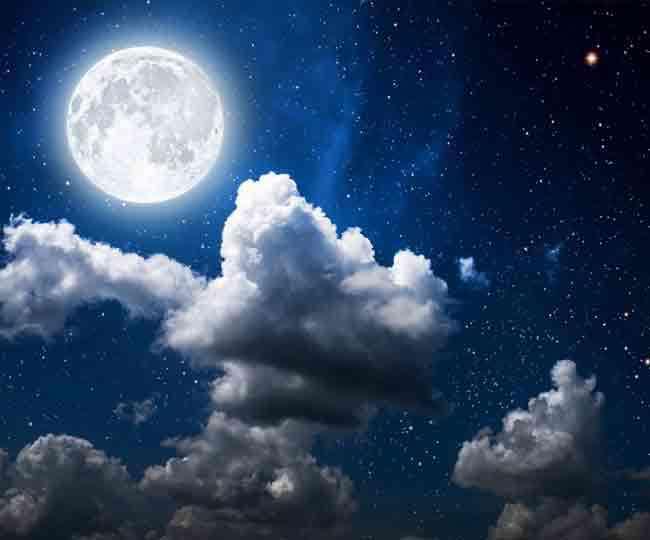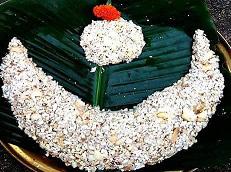Sharad Purnima: The Divine Night
Escape from the black cloud that surrounds you.
Then you will see your own light as radiant as the full moon.
― Rumi

In Hinduism, the moon occupies a place of pre-eminence and it controls both the mind and water, the two most important aspects of life. Revering Nature and understanding its deep impact on human lives, the moon opens a doorway allowing humans to uncover deep potential within themselves. The connection with the moon, in mind, more than in spirit, helps the soul recognize a new inspiration, beyond out of reach inside an old human eternity.
Indian tradition considers every Purnima or Full Moon night sacred and complete, but the ‘Sharad Purnima’, the single night festival, is the most celebrated and auspicious of all, because of its holistic ( sampoorna) quality.
What is so special about the moon on Sharad Purnima? And why is this Purnima considered to be so divine?
This festival which takes place in the month of Ashwin (September/October) is also known by other names like Kumara Purnima, Kojagiri Purnima, Navanna Purnima, Ashwin Purnima or Kaumudi Purnima in various parts of India. It marks the beginning of the autumn harvest celebrations, signifying the end of the monsoon and sowing the seeds of fresh life in various regions of India Only once a year, on Sharad Purnima, the Moon shines with all sixteen phases of waxing/waning. In astronomical terms, there could only be 15 phases of the Moon. But in terms of Indian astrology (the Vasishtha Samhita, ancient Hindu text), the Moon has all 16 phases or Chandra-Kalas. Just like Chakras can’t be comprehended with modern medical science, the Amrita phase can’t be perceived with astronomy Thus, from no-Moon to full-Moon nights, these 16 Kalas/phases are 16 Kala or phases are-- 1. Amrita 2. Manada 3. Poosha 4. Tusthi 5. Pusthi 6. Rati 7. Dhruti 8. Sasichini 9. Chandrika 10. Kanta 11. Jyotsna 12. Shree 13. Preeti 14. Angada 15. Poorna, and finally, 16. Poornamrita.
The Sharad Purnima full-Moon has the beauty or handsomeness and attributes of all the 16 Kalas. The extra phase/Kala known as ‘Amrita‘ is the life-giving nectar. A drop of Amrita fell from the earthen pot (Kumbha) during the Samudra Manthan at Brgiahma-kund / Har-ki-paudi in, imparting divinity to the place. On Sharad Purnima, the Moon, which is closest to the earth at this time, drips this divine nectar.
Corresponding to each lunar phase/Chandra-Kala, there is a Goddess or Nitya Devi – the 16 Nitya Devis pertaining to the 16 phases of the Moon are – 1. Maha Tripura Sundari 2. Kameshwari 3. Bhagamalini 4. Nityaklinna 5. Berunda 6. Vanhivasini 7. Maha Vajreswari 8. Shivadooti 9. Twarita 10. Kulasundari 11. Nitya 12. Neelapataka 13. Vijaya 14. Sarvamangala 15. Jwalamalini, and finally, 16. Chidroopa. Each of the 16 Nitya Devis also has a specific mantra, a yantra and their Shaktis are dedicated to Divine couples, Radha-Krishna, Lakshmi-Narayana or Shiva-Parvati. Therefore, unmarried girls observe this day to get a good spouse and married ones for the longevity of the spouse.

Goddess Tripura Sundari
However, the most important aspect of the Sharad Purnima, spiritually speaking and for the spiritual seekers, is that ONLY on this night there is an opportunity for mortals to receive blessings from Maha Tripura Sundari, the Goddess for the 16th phase. Maha Tripura Sundari is the Supreme Goddess who makes the moon and the night spontaneously blissful. She is the Goddess common to the groups –
(a) Nav Durga – the 9 Goddesses of Nav-ratri nine nights
( b) Das Vidya – the 10 great Goddesses of knowledge
(b) Nitya Devis – the 16 Goddesses pertaining to the 16 phases of the Moon
According to the Srikula tradition in Shaktism, Tripura Sundari is the foremost of the Dasa Mahavidyas. She is the Supreme Deity of Hinduism as well as the primary Goddess of Sri Vidya. The Tripura Upanishad places Her as the ultimate Shakti of the universe. The Power of Tripura Sundari is Pure Consciousness and is beyond speech, senses and mind. She is beyond codes of conduct, free from conduct and free from the conductor. In the esoteric Tantra system, while each of the Dasa Mahavidyas has a yantra and energizing them is done through prayers and processes requiring expert knowledge and guidance, it is noteworthy that Sri Yantra, corresponding to Maha Tripura Sundari doesn’t require invocation to receive blessings.

Sharad Purnima also celebrates the birth of Kartikeya, the son of Shiva. It is also believed that the Goddess Lakshmi descends on earth this day and is said to go from place to place, asking Kojagiri, or, “Who is awake” and blesses those who are found awake. Such is the beauty of this full moon night, that, Lord Krishna began his Raas Leela with Radha and the Gopis on Sharad Purnima, allowing mortals to become a part of Him. To participate in this divine raas, Lord Shiva had taken the form of Gopeshwar Mahadev. Vivid descriptions of this night are given in Brahma Purana, Skanda Purana, and Linga Purana.
Because the Moon is closest to the Earth on Sharad Purnima, it is the greatest moment to harness the healing light of this divine, celestial body. The exposure of skin under the moonlight provides energy, as rays of the moon are just reflections of sunlight. It is the scientific counterpart of exposure to Ultraviolet Rays, which boosts Vitamin D levels in the human body and provides Nitric acid. It maintains blood pressure and stimulates blood flow.

Chanda chakta prasad
The prasad or divine offering on Sharad Purnima is the kheer which is left under radiating moonlight overnight in a silver, glass, or clay vessel covered with a muslin cloth. The whole process has a religious vision as well as a scientific significance. Logic directs, that milk which has a balance of essential nutrients and healing properties when kept under the full moon of Ashwin lunar month emits energy and hastens the bacteria formation process; on the other hand rice present in kheer acts as a catalyst for the procedure. The kheer thus turns into Amrita/Divine nectar. On the subsequent day, it is distributed as a Prasad to family and friends to revive immunity acknowledging the change of season and its effects on the human body.
Karuwaki Speaks wishes all its readers a very auspicious Sharad Purnima!
Comments (11)











